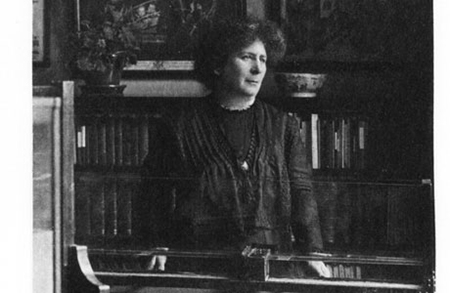Dr Claire Jones is a teacher in the Faculty of Humanities and Social Sciences and an Honorary Fellow in the Department of History
“If the only woman in the history of science that you can name is Marie Curie, you are not alone: both teams competing in a recent University Challenge, failed to recognise Caroline Herschel, Kathleen Lonsdale, Elizabeth Garrett Anderson and Nobel prize winner Dorothy Hodgkin, and nor did they seem to show much glimmer of recognition when Jeremy Paxman told them the answers.
As a social historian of science, I’m used to looks of bemusement when I explain that my research is on the history of women in science – or worse being told that I must have an easy job as I will run out of women to research very quickly!
It’s true, look at the membership lists of learned societies and you find mostly male names. Look a little deeper though, and you can pick up the trail of many women practising science at the periphery in the 19th and early 20th centuries, albeit mostly excluded from the membership.
Finding these ‘hidden’ women is the aim of a new collaboration called Women in Science Research Network (WISRNet) which brings historians, archivists and practising scientists together to explore women’s participation in science in Britain from 1830 to the present.
WISRNet, in partnership with Kingston University, The Royal Society, and The Rothschild Archive, hopes to reveal more about women’s low visibility and to uncover further avenues for research. We also want to develop strategies to improve the participation of women in science today and will be running a ‘shadowing scheme’ to enable early career researchers in the history of science to pair up with a practising woman scientist.
We are hoping to uncover more about women such as Hertha Ayrton, the physicist and electrical engineer who was nearly elected a Fellow of the Royal Society (FRS) nearly half a century before the first two women, Kathleen Lonsdale and Marjory Stephenson, were admitted in 1945. Ayrton was nominated for a Fellowship by a group of modernising FRSs in 1902 – a move received with dismay by the then president William Huggins and his supporters on the council.
Ayrton was a forthright woman not afraid to speak her mind and she was frequently quoted in the press defending women’s contributions to science.
Women were seen as amateurs, not professionals, and the elite societies especially did not want to be tainted by amateurism. But the problem was sensitive and arguments had a habit of going public. When the issue was debated at the Royal Geographic Society the conflict spilled out into acrimonious exchanges on the letters pages of The Times (after years of debate women fellows were admitted to the Royal Geographic in 1913).
Ayrton’s nomination was unsuccessful; the Royal Society attempted to head off any controversy by seeking legal opinion which, after much argument, advised against the eligibility of married women. Married women were covered in law by the person of their husband and Ayrton’s husband William, who died in 1908, was a Fellow already. The lawyers were less sure about the position of unmarried women and left that to the discretion of the Royal Society council, who promptly ignored it.
Their anxiety over the issue of women’s admission is reflected by their letter, sent to every fellow, explaining that legal opinion had instructed that Ayrton’s nomination could not be registered or read. In this way the council ducked responsibility by implying that their hands were ‘legally tied’ – a situation that was to remain for the next 143 years.
However, the issue of women’s admission as Fellows refused to go away. On 16 June 1914, a day coinciding with the Royal Society’s annual soirée, an anonymous correspondent mounted a long and blistering ‘Complaint against the Royal Society, The Handicap of Sex’ which was published in The Times. Much of the argument centred on the fact that on the one night when the Royal Society opened its doors to the public, allowing women to ‘mingle with the hoary-headed scientists’, it was the wives of scientists and not woman scientists who were granted admittance:
The article concludes with a call to ‘let the world never forget that every discovery published by a woman represents much more than the same discovery made by a man and is a twofold achievement’. This anonymous correspondent was, in fact, the palaeobotanist and birth control pioneer Dr Marie Stopes who was paid £3 for her contribution.
Fast forward to 2013 and The Royal Society will make the annual announcement naming new fellows next month; at present women hover at around 5% of the Fellowship. To formulate strategies to understand why women are still typically underrepresented in science and scientific societies – and to suggest ways to overcome this loss of female talent – will be one of the key aims of WISRNet.”
WISRNet web: http://womeninscience.net/
